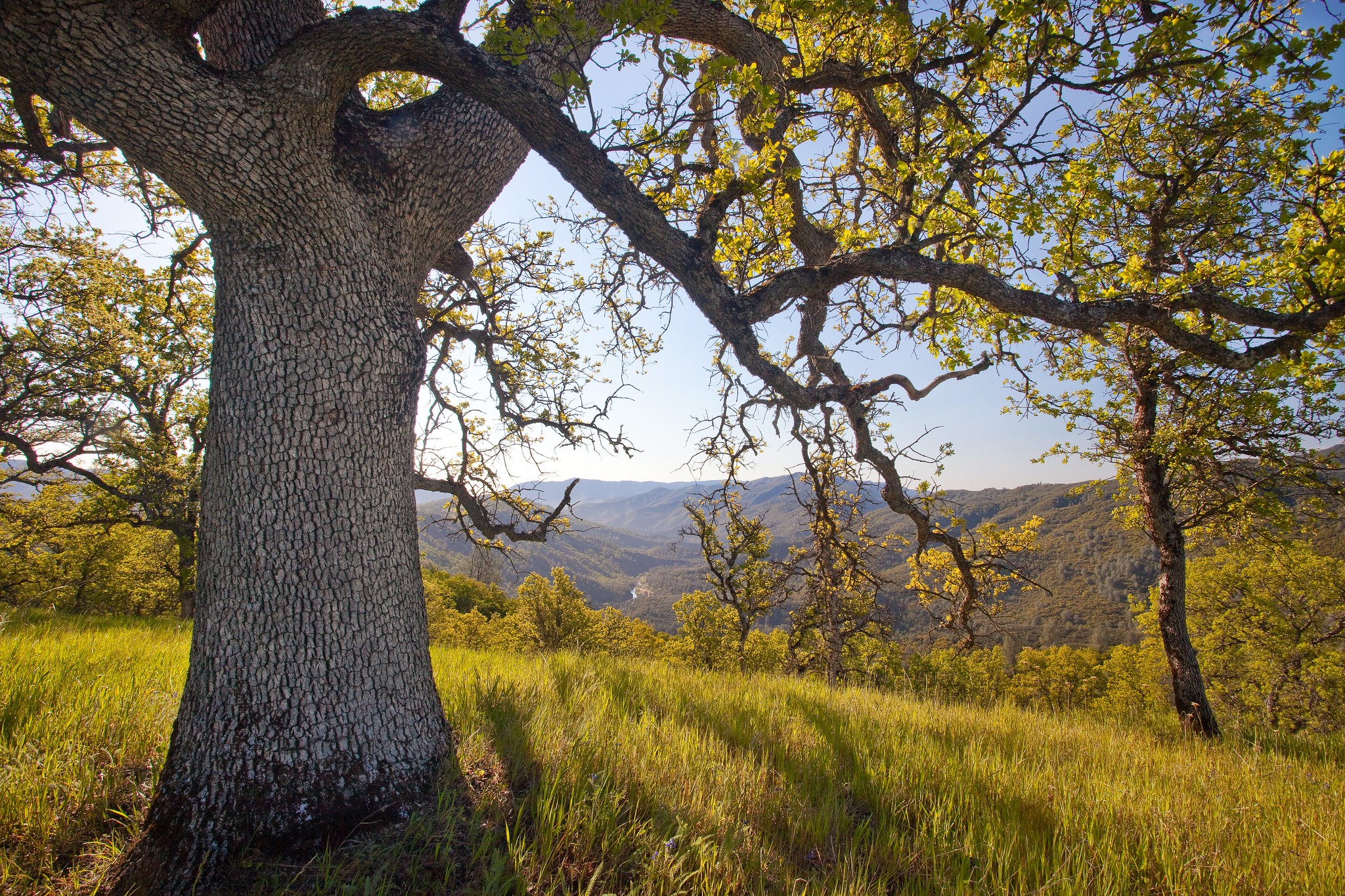How Trees Support Habitats for Birds and Mammals
Native trees are not just beautiful additions to our landscapes; they are vital to the health of local ecosystems. These trees provide essential food, shelter, and nesting areas for a wide variety of birds, mammals, and insects. When choosing trees for your yard or garden, selecting native species ensures you’re creating a habitat that supports local wildlife and helps maintain biodiversity.
In this post, we’ll explore how native trees can play a critical role in sustaining wildlife habitats and the environment.
The Importance of Native Trees for Wildlife
Native trees have evolved alongside the wildlife in your region, meaning they provide the best resources for local species. These trees are more adapted to the climate, soil conditions, and ecosystem needs of your area, creating a mutually beneficial environment for wildlife.
Unlike non-native species, which can disrupt local ecosystems, native trees support local food webs, providing shelter and sustenance for birds, mammals, and insects. This mutual relationship is what makes native trees irreplaceable for a thriving ecosystem.
How Native Trees Provide Habitats for Birds
- Food Sources:
- Fruits, seeds, and nuts: Native trees like oaks, maples, and cherries produce fruits, seeds, and nuts that are essential food sources for birds. For example, oaks produce acorns, a favorite food of many bird species, including woodpeckers and jays.
- Insects and larvae: Many native trees, such as willows and birches, attract insects like caterpillars and beetles, which birds feed on. Birds like warblers and chickadees often rely on these trees for feeding opportunities, especially in the spring and summer months.
- Nesting Sites:
- Native trees, with their sturdy branches and natural nooks, provide perfect places for birds to build nests. Trees like maples, pines, and spruces offer sheltered spots where birds can safely raise their young. The hollows in older trees also provide natural cavities for species like owls and woodpeckers to nest in.
- Cover and Shelter:
- Dense, leafy trees provide crucial cover for birds from predators and extreme weather. Native trees like redbuds and dogwoods offer dense foliage that provides shelter, making them attractive spots for birds to roost and seek refuge.
How Native Trees Support Mammals
- Food and Nutrition:
- Many mammals, such as squirrels, raccoons, and deer, depend on native trees for food. Hickories, oaks, and walnuts provide an abundant supply of nuts that are a major food source for these animals. Acorns, especially, are packed with nutrients and are eaten by many mammals, especially during the winter months.
- Shelter and Denning:
- Mammals such as bats, foxes, and squirrels often use the cavities and hollows in native trees for shelter and denning. Pine trees, for example, are often used by squirrels to create nests, while old oak trees can offer shelter for raccoons and bats, who take refuge in tree cavities to raise their young or sleep during the day.
- Cover for Safety:
- Native trees provide dense underbrush and lower branches that help protect mammals from predators. A tree canopy of native species, such as pines and cedars, provides a safe place for small mammals to move about and evade predators.
The Role of Native Trees in Biodiversity
- Supporting a Variety of Species:
- The diversity of trees in a native forest supports a wide range of wildlife, from small mammals like squirrels and rabbits to large mammals like deer. Birds such as sparrows, hawks, and woodpeckers all thrive in forests with a variety of native trees that provide diverse food sources and nesting options.
- Native trees provide a web of interconnected relationships that promote biodiversity, ensuring that many different species can coexist in a healthy ecosystem.
- Native Trees as Part of the Larger Ecosystem:
- Native trees play an essential role in maintaining the balance of an entire ecosystem. Their roots stabilize soil, prevent erosion, and help retain water. Their fallen leaves create rich soil for other plants to grow, fostering a healthy environment for a diverse array of species.
- The presence of native trees helps to restore ecological balance, particularly in urban and suburban areas where habitat loss is a growing concern.
Which Native Trees Are Best for Supporting Local Wildlife?
The trees that will be most beneficial to your area’s wildlife depend on where you live. Here are some examples of native trees that support birds and mammals in different regions:
- Eastern United States:
- Oaks (Quercus spp.): Provide acorns for mammals and nesting sites for birds like woodpeckers and blue jays.
- Black Cherry (Prunus serotina): Produces fruits that attract many bird species, and its bark provides shelter for insects.
- White Pine (Pinus strobus): A fast-growing evergreen that offers cover for birds and mammals.
- Western United States:
- Ponderosa Pine (Pinus ponderosa): Provides pine nuts and shelter for a variety of wildlife.
- California Black Oak (Quercus kelloggii): Acorns are an important food source for many animals, including deer and squirrels.
- Western Red Cedar (Thuja plicata): A favorite for nesting birds and provides cover for small mammals.
- Southern United States:
- Bald Cypress (Taxodium distichum): A unique tree that provides shelter to waterfowl and aquatic mammals.
- Southern Red Oak (Quercus falcata): Acorns are a staple food for wildlife, and its dense foliage offers shelter for small animals.
Tips for Incorporating Native Trees into Your Landscape
- Research Local Species:
- Before planting native trees, make sure to research which species are best suited to your region’s climate, soil, and moisture conditions. Local gardening centers and native plant societies are great resources for information on tree selection.
- Mix Tree Sizes and Varieties:
- Planting a variety of tree species, from large canopy trees to smaller understory trees, creates a layered habitat that will support a range of wildlife.
- Plant in Clusters:
- Grouping trees together creates a more natural habitat that offers greater coverage and shelter for wildlife. Clusters of trees mimic natural forest environments and allow wildlife to move more freely between them.
- Provide Native Understory Plants:
- Include native shrubs and groundcovers beneath your trees to offer additional food and shelter for small mammals, birds, and insects.
Growing a Greener Future with Native Trees
Native trees are a cornerstone of healthy ecosystems, providing vital habitats for birds, mammals, and insects. By incorporating native trees into your landscape, you’re not only enhancing the beauty of your yard but also contributing to the conservation of local wildlife. These trees support biodiversity, enrich the soil, and help combat climate change, all while offering shelter and food for the animals that depend on them.
As you plan your landscape, think about the native trees that will benefit local wildlife in your area. Whether you’re planting one tree or creating a whole habitat, your efforts will have a lasting, positive impact on the environment.
Ready to create a wildlife-friendly landscape? Explore native tree species in your region and start planting trees that will support local birds, mammals, and other wildlife. By incorporating native trees into your garden, you’re helping to restore natural habitats and create a more sustainable world for future generations.
FAQ
Native trees have evolved alongside local wildlife, providing the best resources for species in the area. These trees offer food, shelter, and nesting sites for birds, mammals, and insects, supporting the local food web and maintaining biodiversity. Non-native species can disrupt these ecosystems, making native trees essential for thriving habitats.
Native trees provide crucial food sources like fruits, seeds, and insects, which attract a variety of bird species. They also offer ideal nesting sites in their sturdy branches or natural cavities. Additionally, the dense foliage of many native trees provides birds with shelter from predators and harsh weather conditions.
Native trees provide food for mammals such as squirrels, raccoons, and deer through the nuts, seeds, and fruits they produce. They also offer shelter, with tree cavities and hollows serving as denning sites for various mammals. The dense canopies of native trees provide cover, helping small mammals evade predators.
Native trees support a variety of species by creating interconnected habitats that provide food, shelter, and nesting sites. This promotes biodiversity by allowing many different species to coexist in a healthy ecosystem. The presence of native trees also helps restore ecological balance, especially in areas with habitat loss.
To support local wildlife, research which native tree species are best suited to your region’s climate and soil conditions. Plant a variety of trees, including large canopy trees and smaller understory species, and consider grouping them in clusters for greater shelter. Adding native understory plants will further enhance the habitat for birds, mammals, and insects

